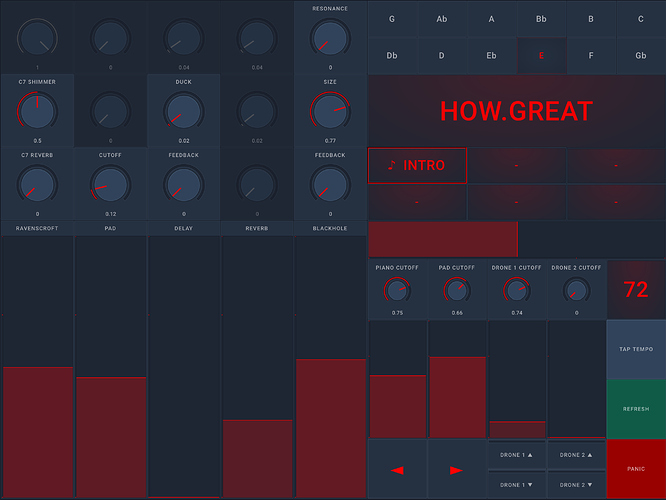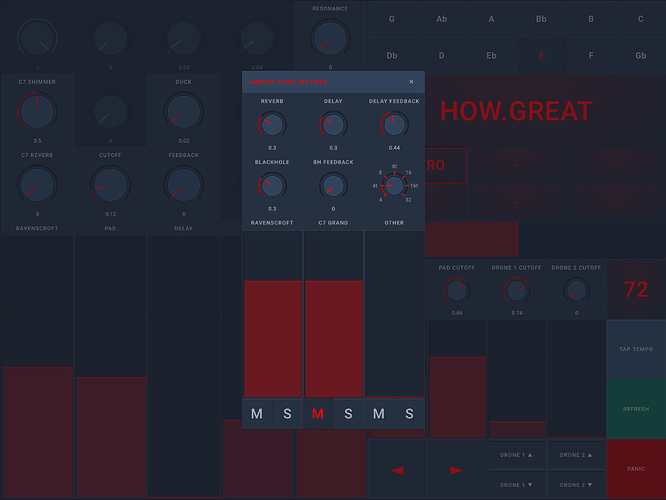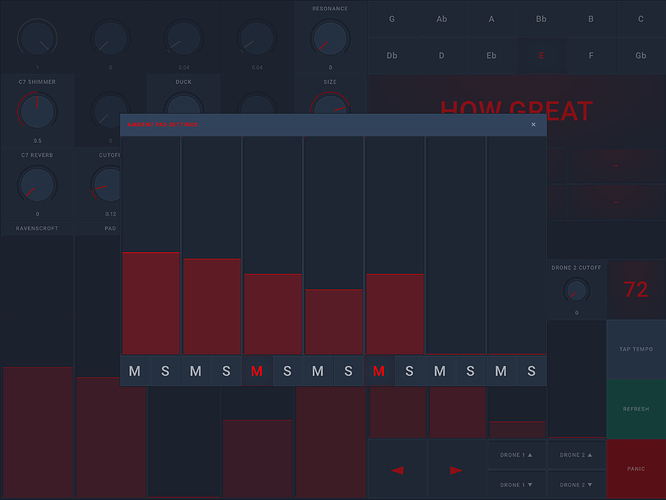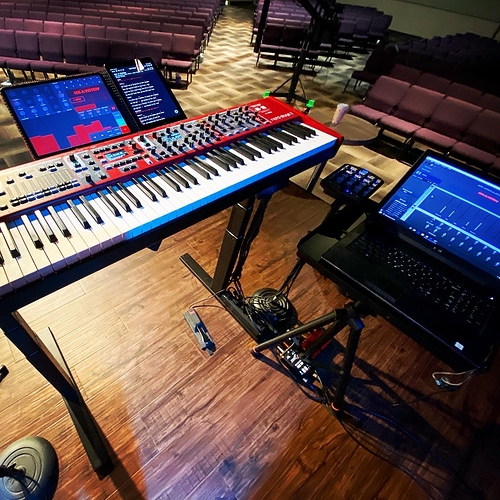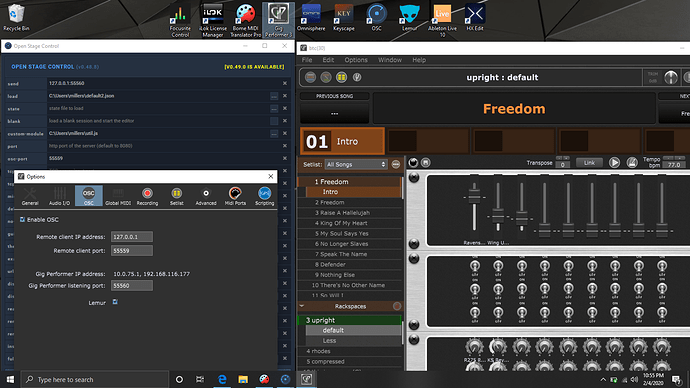stevmills said it, but I think it’s worth saying again because the Open Stage Control website can make it seem a lot more complicated than it actually is.
Whether you’re running GP on OSX, Windows, or Linux, all you need to download is the right Open Stage Control package for your system.
When you unpack that, it creates a folder with a lot of support files and one executable.
You generally run that executable (open-stage-control.exe on windows) on the same system you run GP on. It will open a configuration window with a couple dozen options, but only two that you need to specify:
- Send: 127.0.0.1:54321 or whatever port you told GP to listen on
- Osc: 54345 or whatever you told GP to send on
Then you open a web browser on any device you want to use as a controller. I’ve used three or four different phones of various generations, an old Kindle Fire, my mother in law’s iPad (just to test), and my windows Surface Pro.
After opening the web browser you just connect to your computer’s IP address, port 8080 (unless you changed that in the open state control settings window). For me that’s typically 192.168.1.229:8080.
Then you select the template to load (which I keep in a folder on the GP computer), go full screen, and you’re rolling.
I find building templates easier in Open Stage Control than in Lemur or TouchOSC, but maybe that’s just because I’ve used it a lot more. It’s also a lot more powerful and flexible for template design and functionality from my experience. You can embed scripting and all sorts of stuff into widgets, but I haven’t found a need to go there.
What’s mechanically happening here is that the open-stage-control executable is just starting up a web server that acts as the OSC interface to GP, and it provides a web server interface that you can connect any reasonably modern browser to. So you don’t need a Lemur or TouchOSC app on your display device. In my opinion it’s better than the alternatives, better supported, and free.
